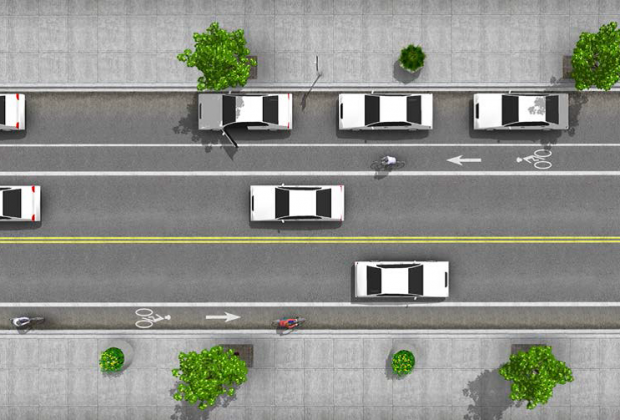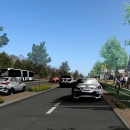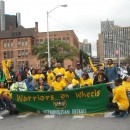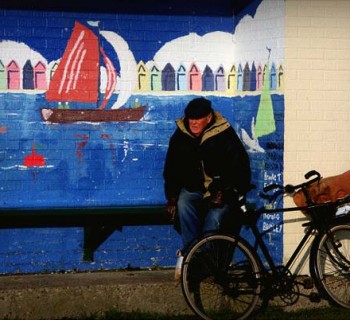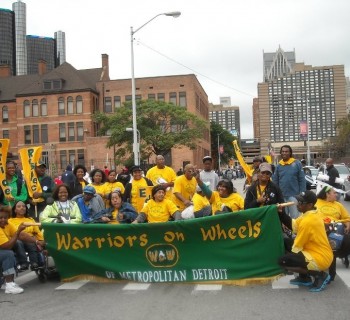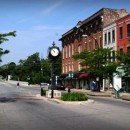Six Detroit suburbs are pulling together for a project that promises to be a pretty cool development for local cyclists; a new signed inter-city bike route called the Woodward Corridor Neighborhood Bicycle Network.
The endeavor is aimed at creating a highly visible, connected neighborhood that will link together the communities of Ferndale, Hazel Park, Huntington Woods, Oak Park, Pleasant Ridge, and Royal Oak. Once completed, the 17.1 mile loop will help connect central business districts and employment centers in those communities, as well as 13 parks, 10 schools, two libraries and a university.
Ferndale, a community with a great reputation for walking and biking infrastructure, is spearheading the effort. The city won approval from the Michigan Department of Transportation and the Southeast Michigan Council of Governments Transportation Alternatives Program grant to fund the project this July. The estimated total price tag for the network is $338,400. Including the TAP grant money, federal funding for the project will total around $194,000. Individual communities will be responsible for chipping in 30 percent of the respective costs for their portions of the network.
Ferndale was previously awarded TAP grants for improvements on Livernois and W. Nine Mile Road. This time around, though, Ferndale Project Planner Justin Lyons tells Mode Shift the city was interested in thinking a little bigger than just its own home turf.
"When deciding upon a project to apply for, we thought the bike route had potential to not only benefit Ferndale residents and businesses, but also connect with neighboring communities, " he says. "Royal Oak already became more bicycle-friendly with upgrades to their bike route this summer and we think this project continues the positive momentum for cyclists in neighboring communities."
The project will use wayfinding signs to create the route, in some places adding to or replacing existing bike-related signage. Wayfinders will direct travelers to key destinations and list distances to parks, schools, downtowns and other cities.
Several communities will also be investing in additional measures to complement the signage. Ferndale will have wayfinding hubs (with route maps); high visibility crosswalks; sharrows; bike lanes, racks and repair stations; pedestrian refuge islands; and rectangular rapid flashing beacons. In addition to this, Royal Oak will have the flashing beacons, and Huntington Woods will make use of sharrows.
The network has been designed to align with several of the communities’ non-motorized, economic development and master plans, as well as the SEMCOG's non-motorized plan for Oakland County.
Project sponsors believe the endeavor will make travel easier for cyclists, while helping motorists be more mindful of folks traveling on two wheels. They also think it will make bicycling a more attractive option for infrequent cyclists.
"We hope that cyclists who are not comfortable riding their bikes on Woodward will see the route as a safe option to connect with other communities," says Lyons. "Since people have already been using the route, we think this project will make the route more visible and make more casual cyclists aware of it. "
John Lindenmayer, Executive Director of the League of Michigan Bicyclists, tells Mode Shift he's happy to hear the cities are working together to create the network.
"LMB is excited to see the collaboration between local communities and MDOT to provide better accommodations for bicyclists in the region," he says. "The shared lane markings, bike lanes and wayfinding signs are an important step in creating a comprehensive network of bicycle routes."
Lindenmayer sees the network as an outgrowth of the Complete Streets movement, which emphasizes that roadways should reflect the needs of all users, including bicyclists.
"It’s a fundamental shift from the way we have traditionally designed our communities. Complete Streets takes a more inclusive approach to our transportation needs," says Lindenmayer.
"Instead of simply moving automobiles from point A to point B as quickly as we can, communities are now recognizing the safety, health and economic benefits of moving people from point A to point B, regardless of transportation mode."
Work on the bicycle network is expected to begin in May 2016 and wrap up in July.


